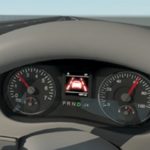
By Brian Kinniry, Senior Director of Product Management, The CEI Group
May 29, 2023
Automated Driver Assistance Systems have revolutionized driver safety in the past 20 years. As a result, auto manufacturers are adding more advanced safety features to every model year. ADAS improves road safety.
However, drivers need to be familiar with their capabilities, how they function, how they react to certain events, and how drivers can avoid over-reliance. Driver confusion and over-reliance can cause mistakes, second-guessing, hesitation, and even panic. This state of confusion can be called Driver ADAS Impairment.
Like other high-risk driver issues, companies need to make drivers aware of the risk associated with ADAS impairment, train them about the systems, features, limitations, and continuously communicate ADAS-related safety changes so that they stand ready to respond in an effective, prescribed manner.
.
Examples of Driver ADAS Impairment
Even the best safety technology demands total driver commitment to understanding and accepting the proper use of the ADAS. Ignorance of ADAS capabilities and its limitations, or the over-reliance of systems, both define Driver ADAS Impairment.
Pre-collision warnings and cross-traffic alerts need immediate attention. If a driver who uses the rear parking assist and backup camera is unfamiliar with the frequency of the alert, panicked reactions – such as hitting the accelerator instead of the brake, can lead to a crash.
Drivers may rely too heavily on lane departure warning systems, assuming that they will always detect when the car is drifting out of its lane. This can lead to complacency and a failure to pay attention to the road ahead, potentially causing accidents.
 Overconfidence in automatic emergency braking might lead some drivers to assume that automatic emergency braking systems will prevent all accidents. That misunderstanding can lead them to drive faster and pay less attention to their surroundings. Automakers are clear that any system may not always work as intended. Drivers relying on them completely (without time for driver involvement) is dangerous.
Overconfidence in automatic emergency braking might lead some drivers to assume that automatic emergency braking systems will prevent all accidents. That misunderstanding can lead them to drive faster and pay less attention to their surroundings. Automakers are clear that any system may not always work as intended. Drivers relying on them completely (without time for driver involvement) is dangerous.
Over-reliance or haphazard reliance of rearview cameras can lead to collisions, injuries, or worse. Drivers may ignore other important information, such as the presence of pedestrians or other vehicles that are not visible on the camera.
Ignorance of all of the available driver safety features — adaptive cruise control, blind spot monitoring, and lane keeping assist can lead to accidents or near-misses. On the other hand, some drivers may assume that their car’s ADAS features allow them to fully disengage from the driving process. This is not the case, and drivers must always be prepared to take control of the vehicle if necessary.
An Unexpected ADAS Vulnerability
Car wash crashes are a surprising ADAS system vulnerability. Car washes can cause malfunctions or errors by interfering with the sensors and cameras of ADAS systems. For example, the system might be unable to detect obstacles or false positives if a spray or brush blocks it. This blindness could lead to unanticipated braking, steering, or acceleration.
 Drivers must know the manufacturer’s recommendations and instructions for car washes using ADAS-equipped vehicles. Manufacturers may not recommend certain types of car washes, or they may recommend disabling certain ADAS features before entering a car wash.
Drivers must know the manufacturer’s recommendations and instructions for car washes using ADAS-equipped vehicles. Manufacturers may not recommend certain types of car washes, or they may recommend disabling certain ADAS features before entering a car wash.
Understanding ADAS Terminology Confusion
Manufacturers use a variety of Automated Driver Assistance Systems to improve driver safety. Like other telematics systems, ADAS monitors a car using GPS and video to determine vehicle position and speed.
The three types of Advanced Driver Assistance Systems (ADAS) — collision mitigation, collision intervention, and collision prevention — are designed to help drivers avoid collisions.
While these systems are related and may overlap in some ways, there are also some key differences between them:
- Collision mitigation systems are designed to reduce the severity of a collision already in progress. They typically use sensors and cameras to detect an impending collision and then activate features like automatic emergency braking or seatbelt pre-tensioners to try and reduce the impact of the collision. Collision mitigation systems are typically reactive and rely on the driver to take action to avoid the collision in the first place.
- Collision intervention systems go further than collision mitigation systems by actively intervening to prevent a collision from occurring in the first place by using sensors and cameras to detect an impending collision. Then they automatically take action to avoid the collision, such as applying the brakes or steering the vehicle away from the obstacle. Collision intervention systems may be able to prevent collisions even if the driver is not able to react quickly enough.
- Collision prevention systems are designed to prevent collisions from occurring in the first place by aggregating data from a variety of sensors and cameras that monitor the vehicle’s surroundings and detect potential hazards, such as other vehicles or pedestrians. The system may provide the driver with warnings to take action to avoid the hazard, or may take action automatically to avoid the hazard on its own. These systems are the most proactive and meant to minimize the risk of a collision.
Digging deeper into the ADAS hierarchy, automakers promote safety features such as collision warning, collision intervention, driving control assistance, parking assistance, driver monitoring, and more. Of course, fleets managing multiple makes and models of cars and trucks have an even more complex driver education effort trying to define the multitude of ADAS names and purposes. In fact, a coalition of experts in auto safety and automobiles is working together to create a standard ADAS glossary to reduce confusion.
Some of the most critical ADAS systems that enhance driver safety and road safety include:
- Adaptive Cruise Control
- Adaptive Light Control Systems
- Automatic Emergency Braking (AEB)
- Automatic Crash Notification
- Automated Parking
- Automatic Navigation System
- Blind Spot Monitoring
- Collision Avoidance Systems
- Driver Drowsiness Detection
- Forward Collision Warning (FCW)
- Hill Descent Control
- Intelligent Speed Adaptation
- Lane Departure Warning Systems (LDW)
- Night Vision Systems
- Tire Pressure Monitoring
Yet, many of these can appear under different appellations. Still, understanding the terminology is the key to proper driver performance in the case of an emergency that invokes an ADAS. Automatic Emergency Braking is one example of a safety feature that will act automatically without the driver’s reaction. But, the Collision Avoidance Systems will alert the driver to react in order to prevent a collision.
 For a driver to be able to heed a warning effectively, a driver must understand which feature is being activated. Another example: if the driver’s drowsiness alarm sounds and the driver does not understand it, that driver might wrongfully believe that a collision is imminent.
For a driver to be able to heed a warning effectively, a driver must understand which feature is being activated. Another example: if the driver’s drowsiness alarm sounds and the driver does not understand it, that driver might wrongfully believe that a collision is imminent.
Practically speaking, drivers unfamiliar with ADAS features may become overwhelmed and turn them off when they take control of a vehicle for the first time. While this action may lessen distraction from unfamiliar alerts and warnings, turning off a vehicle’s safety system increases driver risk. Therefore, fleet and safety managers must engage and inform drivers about the inherent value of each system for the driver and the company.
ADAS and Fleet Management
The commercial driving industry constantly changes and releases new safety features. Therefore, the organizational priority should be educating and communicating with drivers, who must understand these changes to stay safe. Here are the key steps that safety and fleet managers can take to help drivers maximize safety from vehicle ADAS systems:
- Driver Policy & Driver Confirmation of Owner’s Manual Review: Because Driver ADAS Impairment is a growing source of risk for drivers and their employers, a Fleet Driver Policy must include steps to ensure drivers understand the systems and their proper utilization. It must also define the ways drivers can become over-reliant and the measures necessary to avoid over-reliance. Every driver who receives a replacement vehicle faces the challenge of learning about all of the new safety equipment. Fleet and safety managers must ensure that their drivers are familiar with the safety feature set, the functions of each feature, and the proper driver interaction.
- Specialized Training for ADAS: Safety managers and fleet operators should review safety features, explain ADAS-related driver performance requirements, demonstrate and practice the systems in a controlled environment, and test driver competency when providing a vehicle to a driver.
- ADAS Updated Training: Companies must keep drivers updated about any changes or updates to systems that affect their vehicles as technology advances. For example, many fleets are moving to EVs. These vehicles often come with several pre-installed ADAS features that drivers may not be familiar with, but drivers should be updated on any changes to ADAS.
- Safety Communications: Fleet managers must communicate with drivers about more than safety system updates. The ongoing safety communication effort with drivers should include updates from OEMs, stories, and company-specific trends. These will affect driver use of advanced safety technology and safety. For example, as previously mentioned, some vehicles with ADAS systems have had problems with automatic car washes. Some vehicles even refuse to go through the wash tunnel or don’t follow the track. Fleet managers must be alert to these issues and communicate them to drivers.
- Pool Vehicle Assignment Safety Process: Fleets must ensure drivers have all the information before driving pool vehicles. Implementing a vehicle hang tag system that describes the vehicle’s safety features and requires a signed testament of owner manual safety feature review by the driver is a risk mitigation best practice.
Distraction Is Always a Driver Challenge
Advanced Driver Assistance Systems (ADAS) are designed to assist drivers in navigating the road and avoiding potential collisions. However, there is a possibility that these features may distract drivers if they are not used correctly or if they are too complex. From driver policy to training, fleet and safety managers already have many of the tools to change driver behavior and prevent Driver ADAS Impairment.
 For example, if a driver becomes too reliant on ADAS features such as automatic emergency braking or lane departure warning, they may become complacent and less attentive to the road. This can increase the risk of an accident if the system malfunctions or if the driver encounters a situation where the system cannot assist. Furthermore, some ADAS features may require the driver to take their attention away from the road, such as adjusting settings or monitoring the system’s performance. This can also be a distraction and increase the risk of an accident.
For example, if a driver becomes too reliant on ADAS features such as automatic emergency braking or lane departure warning, they may become complacent and less attentive to the road. This can increase the risk of an accident if the system malfunctions or if the driver encounters a situation where the system cannot assist. Furthermore, some ADAS features may require the driver to take their attention away from the road, such as adjusting settings or monitoring the system’s performance. This can also be a distraction and increase the risk of an accident.
Therefore, while ADAS features can provide valuable assistance to drivers, it is important for drivers to remain vigilant and attentive while driving and not to rely solely on these systems. Drivers should also take the time to learn how to properly use and adjust ADAS features to minimize any potential distractions.
The CEI driver safety team can provide additional insight into ADAS considerations and answer any questions specific to your goals. Visit us here to learn more about ADAS driver impairment and other driver safety initiatives.


